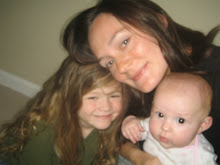
1.Contains a title using the format listed above .25 points
2.Contains the sources you used with links to these sources .25 points
http://www.americansouthwest.net/california/redwood/national_park.html
http://en.wikipedia.org/wiki/Sequoia
http://www.travel-destination-pictures.com/data/media/42/redwoods-state-park_321.jpg
3.Contains a brief paragraph how it connects to your study of humanities. 1 point
Part of my study of humanities is california culture. Part of california culture is it's history. The redwoods (sequoias) of California are part of its history. The are an amazing sight to see, and a trademark to California.
4.Contains the following "analytical elements":
a.Observation: What did you choose? What do you see or hear or feel or think of in the choice you made? What is the subject of the work? If you chose a 'thing' what is the work made of and what techniques (colors, lines, shapes, textures)does the creator use? Be specific in your description. If you chose a place, be specific in your description of what you see or hear. Talk to your reader as though they cannot see the item but somehow must draw a painting of what you see or hear. 1 point
Northwest California was once covered by two million acres of redwoods. They start around the Monterey Peninsula and go north all the way to the Oregon border. Redwoods are the tallest trees in the world. Overtime the amount of Redwoods has been reduced by logging. There are several state parks to preserve the remaining trees.
The largest redwood tree is named Hyperion, it is the largest known tree in the world measuring 379.1 feet tall. The coastal redwoods forest is typically foggy with year round damp weather due to its coastal location. In the forest you may hear many little critters around as it is the habitat of many different animals. On days where the sun makes it through the fog, sun will stream down onto the forest floor between the massive trees.
b.Interpretation: What is your choice about? Give specific examples to support this statement in 2 sentences; do so in a way that teaches us something about your choice. Make Paulo Freire proud! .75 point
My choice is about the culture of California! These trees can live to be 2000 plus years old, older than California's name itself.
c.Judgment: What led you to your choice? What do you think or feel about this choice? Why do you feel this way? Support your thoughts with specific observations. .5 point
I am not much of an outdoors kind of person, and even then, I am amazed by these trees. They are just amazing. When you stand next to them and look up it is almost shocking when you realize just how small you are in the world compared to nature, yet we can so easily destroy it.
d.Questioning: What else would you like to know about this choice? When completing the question section, lead your audience into the question by stating a fact you do know, yet you still have the related question. This way, both your audience and you will have an educational experience. Example: I learned that John Steinbeck's Grapes of Wrath was based on his personal experience working with farm workers. I would like to know if the characters he used in that book are fictitious or are they people he met? .5 point
I know that there are many areas along California's coast all the way to Oregon that house these trees, where else in the world are the prevalent?
5. Using your classmates work from last week, tell us one thing you learned from 1 student. Is this one thing some common experience you share or some experience that is completely different than what you experienced? Is this one thing related to our class theoretical foundation and if so, how? Is that one thing related to historical or cultural context of this country or a different one? Link that persons blog to this entry (eg cut paste that blog entry here) . .5 point
In Mayra's post about The San Francisco Exploratorium I learned that the brother of the founder of the museum, J. Robert Oppenhiemer was the "Father" of the atom bomb. I agree with her that the creation of the exploratorium allows for people to explore and learn the basic concepts of very difficult subjects.
http://miloshumanside.blogspot.com/2009/02/2b-san-francisco-exploratorium.html


